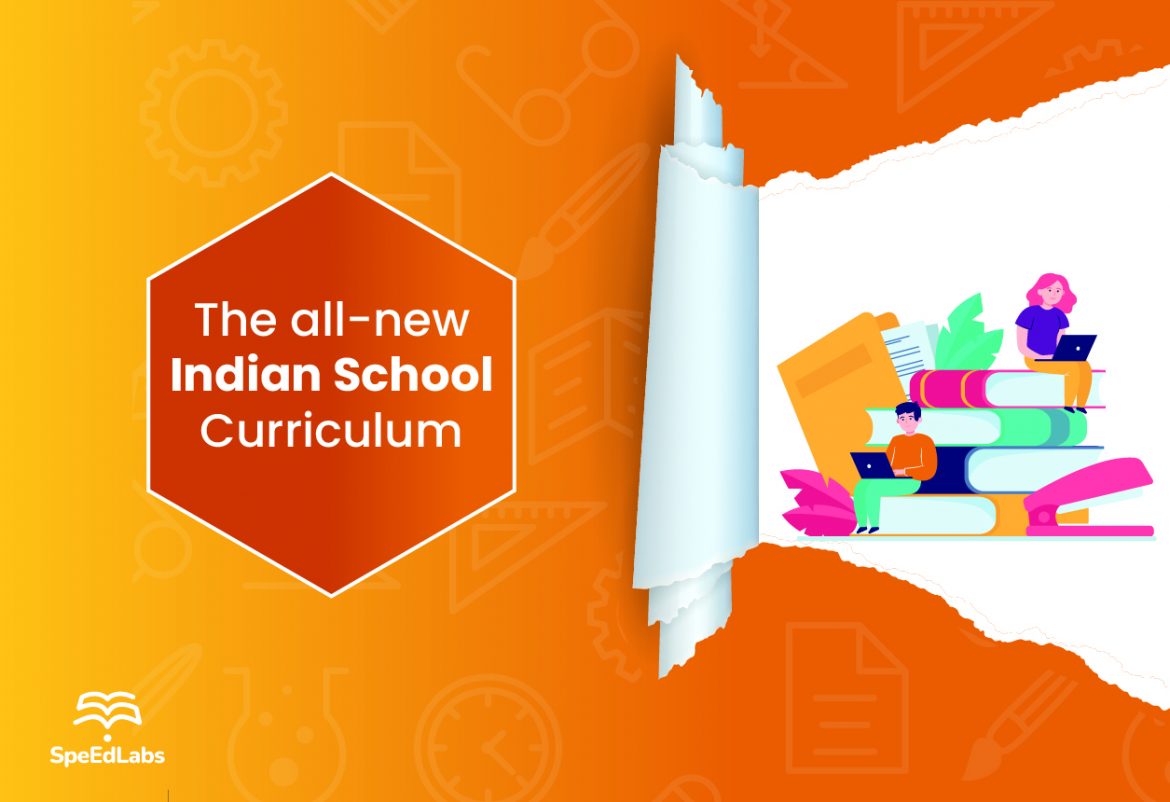It was about time, to change the way our school functions, the way our curriculums are designed and the way learning is defined!
Since childhood, we’ve been encountering the phrase “curriculum.” But have you ever considered why is a curriculum so important? The curriculum’s goal is to standardize education across the country. It guarantees that students of the same age receive the same education regardless of which public school they attend.
‘School systems should base their curriculum not on the idea of separate subjects, but on the much more fertile idea of disciplines which makes possible a fluid and dynamic curriculum that is interdisciplinary’ –Ken Robinson.
Examine the brand-new Indian School Curriculum
Indian curriculum was the same for the past 16th year, and it needs a change. The national curriculum for schooling, childhood development care and training, educational practice, and adult education is presently under formation by the federal government. The school curriculum is facing a change after many years, and it will regulate the construction of courses and materials.
We shall study this freshly structured school curriculum in this blog and how it is successful for education. A Few of the significant elements that the National Curriculum Framework might have included are handicrafts that entail engaging with craftsmen, national awareness of history, and other knowledge-based projects.
The national curriculum includes part of the national educational policy-2020 as well. Let us have some glimpses of the same:
- It aims at providing accessibility to schooling at all levels and ages.
- Novel Classroom instruction and Methodological Architecture for Pre – Primary education.
- It also includes reforming education curriculum and practice to achieve fundamental literacy levels.
- Most vitally, Word’s strength and multilingualism.
- It Includes education that is both accessible and collaborative.
- Educator enrollment and professional paths are robust, for example.
Reforming education curriculum: The goal of school curricula and philosophy will be to provide students with capacity-building by training them with crucial 21st-century skills, reducing course materials to emphasize vital active learning, and putting a greater emphasis on discovery learning. Learners will have more topic options and freedom. There will be no sharp distinctions between the academic fields, participating in different activities, or diverse educational tracks.
Internships will start from class 6th itself under this new education policy. Mr Sridhar Srivastava, Director of the National Council of Educational Research and Training (NCERT), says that ‘For the first time in the country, this national curriculum framework has been introduced. It is on a much broader consultation process, and the states have been brought in right from the start.’
What will the procedure entail?
The four foundations will revolve around 25 issues from the National Education Policy 2020. Aside from native customs, priority topics will include citizenship education, more freedom in high school subject choices, curriculum reduction to fundamental elements, and language learning. In every district, a poll will take place in offline and online mediums, and through this consultation of several community members, instructors, teachers, and students will take place. Not only this, but mobile surveys will also take place regarding the National Educational policy 2020.
All the insights of the policy
- National Educational Policy 2020 aims to improve the Net Enrolment Percentage in higher education, including higher training, from 26.3 per cent in 2018 to 50% by 2035. Higher education institutions will get 35 million new seats.
- Schools will further classify into structures or groups, which will serve as the primary part of government and guarantee that all resources, including architecture, library services, and an extensive career teaching community, are available.
- Sanskrit is an option for students at all levels of schooling. All this is included in the multilingual formula. Other Traditional languages and publications will be accessible as well. No compulsion for any student to study a language. Underneath the ‘Ek Bharat Shreshtha Bharat’ campaign, students will participate in an enjoyable activity on ‘The Languages of India.’
- Emphasizing the significance of fundamental literacy and numeracy as a precursor to education, Educational Policy 2020 asks the Ministry of Human Resource Development to establish a National Agenda on Underpinning Literacy and Numeracy.
- Educational policy 2020 encourages India’s top 100 institutes to provide online degree programs to make them cheaper and more accessible. As a result, digital sites connect themselves with institutions to opt for several choices.
- The approach will place a greater emphasis on evaluating actual knowledge rather than rote learning, with low-stakes board exams. Beginning in sixth grade, students will learn how to code.
- An Educational Vault of Credit will be formed to digitally record course credit gained from multiple HEIs, allowing credentials from HEIs (Higher Education Institutions) to be given based on points gained.
- Following are the focus areas for Schools:
- Teaching competency models
- A student can opt for Secondary school topics in a variety of ways.
- It includes bringing down the curriculum to the fundamentals.
- Integration of Indian Knowledge is also a core element.
- Toys, sports, and physical education are all interwoven in this curriculum.
- The curriculum includes internships with experts to help students develop skills and prepare for any situation.
Key Takeaways
National Educational Policy 2020 and the new curriculum both are interrelated in some way. These are for the benefit of students to gain enough knowledge that is essential to withstand in this competitive world. It is also beneficial to learners in preparing them to be global leaders and more intelligent than before. This curriculum also enables students to learn more about their own country and its rich culture
Also published on Medium.
